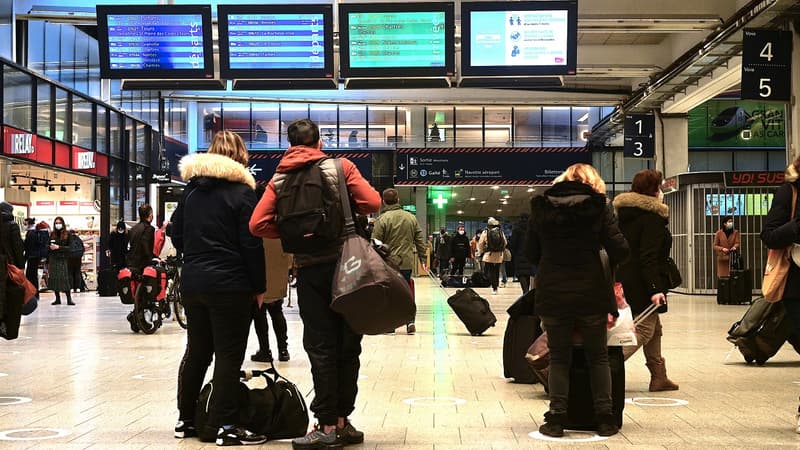It’s time for the big vacation soon and the train should be packed like never before. Reservations are increasing, places are scarce and the SNCF will be tight. Although the operator stresses that he has done everything possible to anticipate incidents, the risks of interruptions, delays, changes and cancellations remain high.
Most of the time, these glitches are communicated to travelers via voice messages or sometimes cryptic notifications. In 2018, SNCF indicated that it was working on “more precise and less technical” messages.
However, the client is still sometimes incredulous in the face of a sometimes mysterious communication.
• Change of material
Everything is fine, you have your ticket in your pocket, but a few days or hours before departure, you receive this disturbing SMS: “Your place on board is no longer guaranteed due to a change of equipment. Exchange or refund possible”.
In reality, the train or car planned for your trip has been replaced by another. Problem, it’s impossible to reallocate each place reserved for customers. The SNCF then offers “a free placement”. Which creates significant stress and/or the prospect of traveling on your feet unless you give up your ride through an exchange or return.
• Lack of equipment availability
This is the step before the previous message. The train scheduled for your trip has a problem (identified during checks before departure, for example), so it is cancelled. It is up to the traveler to manage.
• Delay in preparation/difficulties in transporting the material
A grain of sand comes to seize the organization of the SNCF, it may be that it is a railwayman or an absent captain (controller). To authorize departure, a certain number of incompressible elements must be collected and, if any are missing, the train remains on the platform.
• Operational incident
Most of the time it results in a delay of the train at departure and/or arrival. This type of incident encompasses many things: a change or track problem, an alarm signal thrown by a passenger, an animal hit on the track, a tree on the tracks, people on the tracks, forgotten luggage, etc.
These details are now often communicated by the employer.
• Traffic difficulties
Such an announcement is usually synonymous with delay. The SNCF must respect a certain spacing between its trains for obvious safety reasons. But when a train is delayed or has to be stopped due to an incident involving a train ahead, the other trains are affected by a domino effect.
But these difficulties can also be the consequence of an operational incident.
• Signaling failure
Signaling is at the heart of the operation of rail networks. It allows respecting the minimum safety distance between two trains thanks to sensors or beacons on the track.
As soon as something anomalous is detected (from an object on the track to an electrical failure…), as a security measure, the traffic light turns red to stop the trains and check what is happening.
The driver contacts the PC which gives him instructions. Either traffic stops, or it slows down a lot because faulty signals are crossed on a case-by-case basis (train by train), after more or less lengthy checks depending on the affected signal.
• Power supply failure
A more precise variant can be announced: “A power cable is damaged. SNCF technical services have been notified. For security reasons, all traffic is currently interrupted on our line.”
This does not bode well. Most of the time, this results from an incident on the catenary, this set of cables hung at the top of a pylon that allows the trains to be supplied with electricity through the pantograph placed on the roof of the train.
This catenary can be uprooted, then the traffic is interrupted over the entire electrical sector covered. It can also malfunction, especially in very hot weather.
“In the event of a catenary break, the current stops circulating around the entire perimeter affected by the damaged catenary. The batteries on board allow you to maintain heating and air conditioning for an average of 30 minutes. Your train can then be immobilized if it is necessary in this area. Whenever possible, to avoid the incident, all the trains in the sector in question take other routes,” explains the SNCF.
Source: BFM TV


